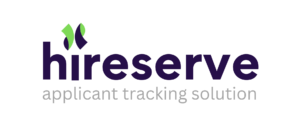The job market has been tumultuous for a number of years now due to the pandemic, UK cost of living crisis, and Brexit. Many organisations are still tentative to push forward a full hiring strategy and have instead opted to keep activities minimal. This doesn’t mean recruitment teams have nothing to work on though. These pockets of time can be highly valuable for work that there otherwise simply isn’t time for. Keep reading to find out some of the key ways your team can best use a hiring slow down.
What is a hiring slow down?
A hiring slow down is a tactic employed by organisations when significant shifts occur, which can include economic downturn, budgetary concerns, or international emergencies – such as a pandemic. When major changes take place in the external environment, many organisations will put in place different protocols to help it weather any storms, and a hiring slow-down can be useful for saving money and keeping a business in operation during challenging times.
Catch up with your recent hires
After onboarding, new hires are often forgotten – however this is actually one of the most crucial stages for measuring the success of your recruitment efforts. You may feel confident that you attracted or nurtured a highly talented individual who had a positive enough experience with your company that they happily accepted your job offer and came onboard. But whether this has translated into an employee with increasing productivity who feels they are getting what they signed on for when they joined is another thing entirely.
Use a hiring slow down to catch up with any hires you’ve made in the last twelve months and discuss some of the below key points with them:
- Does your past expectation of the company culture and values match with the current reality?
- Was your pre-boarding and onboarding process effective?
- Did you find anything surprising about the organisation once you joined?
- Do your day-to-day responsibilities match the job description you interviewed for?
- Do you think there is enough internal mobility and opportunity for you to stay with the business long term?
Build relationships with hiring managers
A strong relationship between your talent team and internal hiring managers can be a deciding factor in how successful your recruitment process is. During a hiring slow down, take the time to meet with hiring managers to discuss what they think future success for their team looks like, their team culture, and feedback on past hiring processes to identify areas for improvement. This is also a prime opportunity to talk about what roles may be likely to come up in each team when hiring begins to ramp up again, allowing your recruitment team to adequately prepare.
You might be interested to read about: How to improve your interview technique
Internal Career Maps
Career mapping is a highly useful exercise for employee onboarding and retention efforts. It includes setting short-term, medium-term, and long-term goals for the employee to create clarity for both the employer and employee around their career path and development in the organisation. This can be tailored to the talents of new hires, but having a generic one prepared for jobs you may be advertising in the future can help prove to top talent during the recruitment process that your company is serious about career growth and ready to not only plan this out, but also to utilise the plan to ensure the right support is in place.
Top tips:
The career mapping should display the growth and progress of an employee throughout different roles, as well as within each role that they may sit in for up to a few years.
Ensure the career maps are realistic and consider the resources made available to employees within your organisation.
Include the key points of the career map in the JD when hiring for these roles to allow potential applicants visibility so they can identify if the long-term trajectory of the role suits them.
Sort out your tech
One of the best ways to make use of a hiring slow down is a complete audit of the technology tools in your recruitment arsenal. Agree within your team on a criterion for grading each of these tools to identify what makes a difference, and what might need replacing or scrapping. This could include quantitative grading by rating how effectively each tool makes an impact on measurable metrics, like cost-per-hire and time-to-hire, as well as collecting qualitative data, such as past feedback from candidates or internal stakeholders who had positive or negative experiences related to your tools.
If you’re exploring new recruitment solutions, you might be curious to learn about what Hireserve ATS can do for your organisation.


